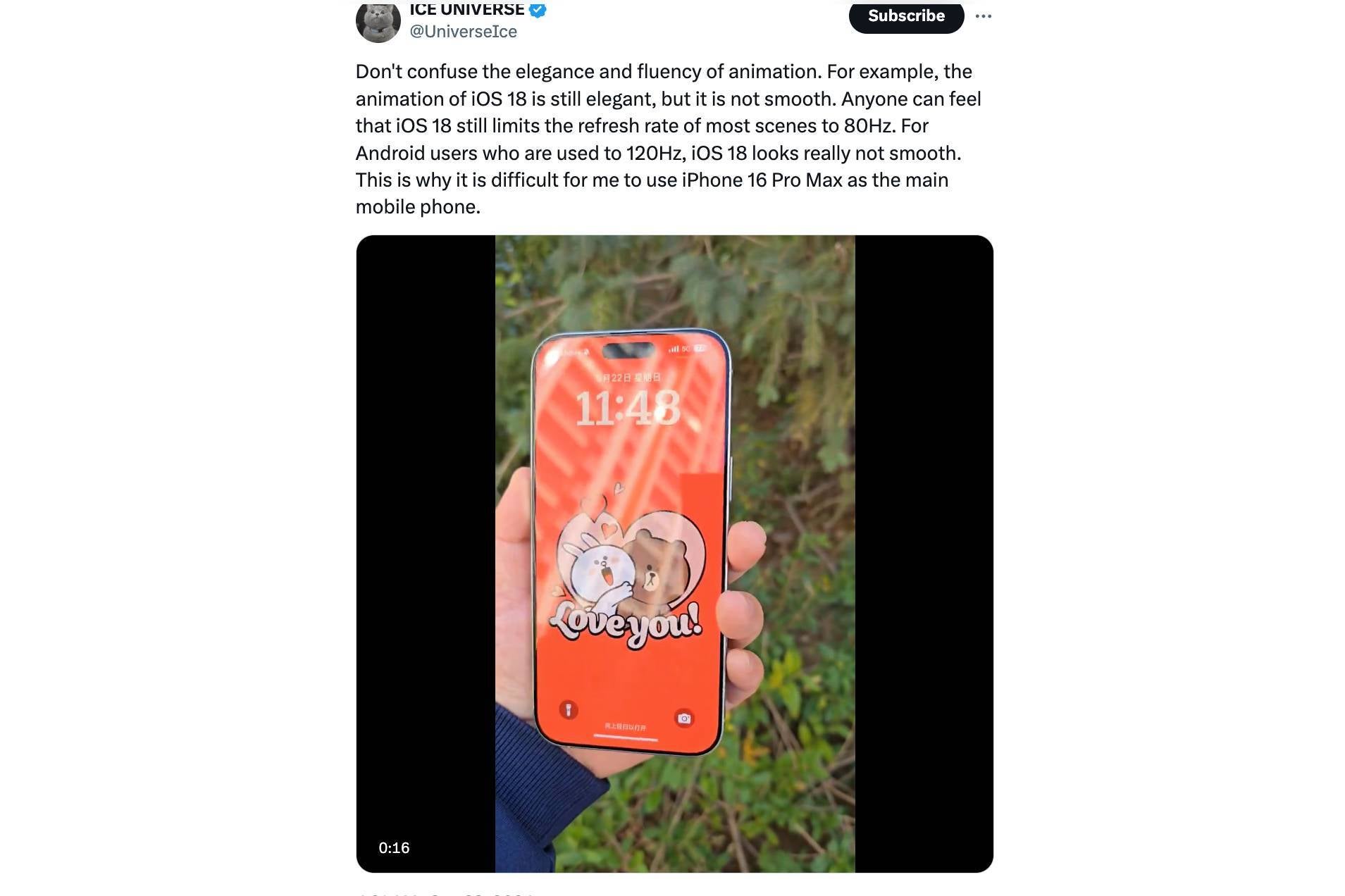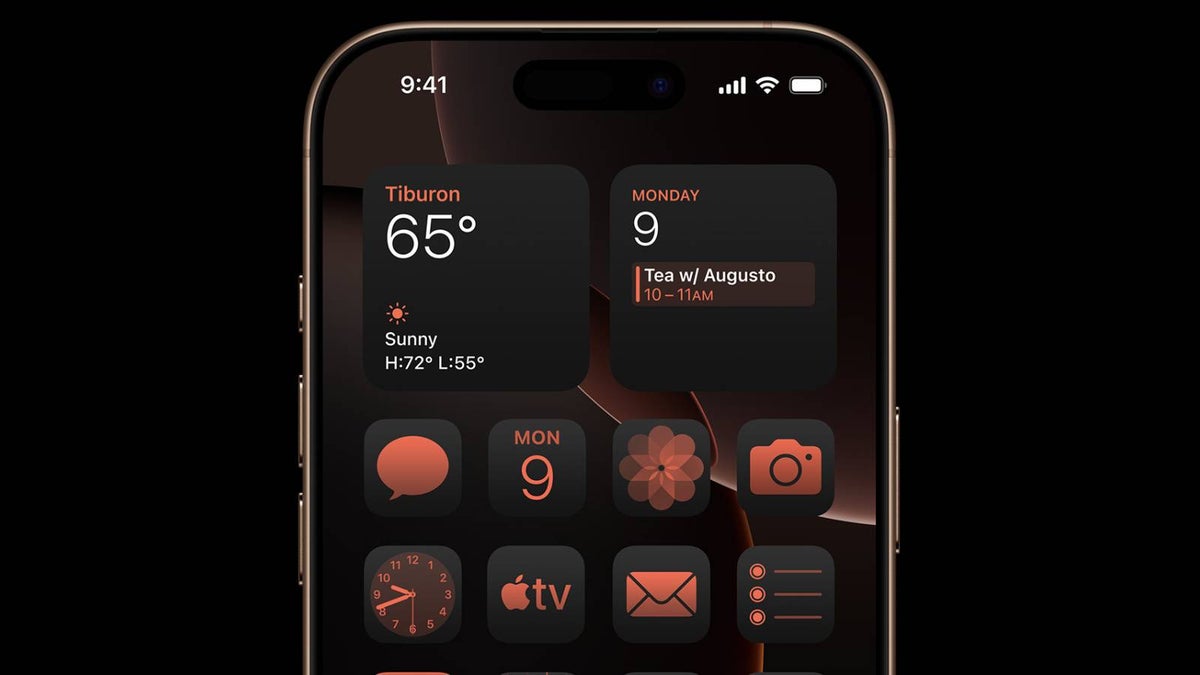If anyone still doesn’t understand this, please watch this video. When scrolling through the list, iOS18 is always locked at 80Hz, and 120Hz is rarely seen.
source:weibo 孙斌1990 pic.twitter.com/lAJ10vBRad— ICE UNIVERSE (@UniverseIce) September 23, 2024
A display that supports a refresh rate of 120Hz refreshes the screen 120 times per second, resulting in improved responsiveness and smoother motion when viewing fluid content or scrolling.
When you splurge on a pricey phone like the iPhone 16 Pro, you should be able to enjoy the full benefits of a 120Hz display, such as buttery smooth navigation and reduced motion blur during fast-paced games where even a minor delay could cause you to lose.

Does iOS 18 mostly limits the refresh rate to 80Hz? | Image Credit – Ice Universe, X
Apple probably has its reasons for limiting the refresh rate to 80Hz. Since the more often a display refreshes, the more power it consumes, a high refresh rate uses more battery. This could be the main reason behind the company keeping the refresh rate low.
The Pro models are capable of dynamically switching between fast and slow refresh rates but as a user, you wouldn’t expect the phones to mostly stick to a 80Hz refresh rate.
That said, it’s possible that the refresh rate was not measured correctly by Sun Bin 1990, with designer Ian Zelbo chiming in that the correct tool was not used for analyzing the refresh rate.
We will likely find out if there’s any truth to Ice’s assertions in a few days as more people get their hands on the device. Meanwhile, rumors are swirling around that 120Hz screens will be standard across the entire iPhone 17 lineup, meaning you will no longer have to fork over more money for a Pro model to get a screen that supports a high refresh rate.
